Table of contents
Carob powder is made from the pulp of the carob pod. It is best used in organic quality as a substitute for cocoa powder. Whether commercially available powder is really raw depends on the production process.
Use in the kitchen
What is carob powder? Carob powder consists of dried and ground pulp of the carob pod. It has a strong, aromatic taste reminiscent of chocolate and caramel, but is very low in fat. Carob powder has many different uses. In the kitchen, it is often used as a natural sweetener to refine vegan smoothies, nut drinks, desserts, spreads and muesli, or to decorate vegan cakes, tarts and pastries. Its fruity, caramel aroma goes well with oranges, lemons, cinnamon, vanilla and nuts such as hazelnuts, macadamia nuts or almonds. Unlike cocoa powder, it contains significantly less fat, which is why carob recipes often have fewer calories. It is also free of stimulants such as caffeine and theobromine.
Interesting applications include raw chocolate cream, exotic banana bread with mango and ginger, or sweet date and walnut balls. Carob chips are also popular for baking and can be used for homemade cookies. Is carob powder raw? Carob powder can certainly be available in raw food quality. However, roasting processes can be used during the industrial production process and temperatures above 42 °C can occur. Unless explicitly stated, carob powder is therefore not a raw food product.
What is carob? Carob is basically the name given to the fruit or pod of the carob tree. The pulp and seeds of the pod are used to make powder, flour or syrup. For example, the seeds are used to make carob gum, which can be used in the kitchen as an alternative thickening agent.
Vegan recipe for energy smoothie with carob powder
Ingredients (for 4 servings): 2 bananas, 200 g strawberries, 2 sprigs of fresh peppermint, 200 ml oat milk, 2 tbsp agave syrup, 2 tbsp carob powder (organic).
Preparation: Remove the peel from the bananas and quarter them. Pour the oat milk into a blender and add the banana. Blend well once and then add the strawberries one piece at a time. Finally, add the peppermint, agave syrup and carob powder to the blender and blend the smoothie into a creamy mass. Pour the vegan energy smoothie into glasses, decorate with peppermint and enjoy fresh.
Vegan recipe for carob muffins
Ingredients (for 4 people): 125 g spelt flour (light), 80 g maple syrup, 60 g carob powder (organic), 1 teaspoon baking powder, ½ teaspoon baking soda, ¼ teaspoon salt, 125 ml oat milk, 60 ml rapeseed oil (refined), 1 teaspoonvanilla powder.
Preparation: Preheat the oven to 180 °C. Grease muffin tins or line them with paper liners. In a large bowl, mix together flour, carob powder, baking powder, baking soda and salt. In a separate bowl, mix together oat milk, rapeseed oil, maple syrup and vanilla extract. Add wet ingredients to dry ingredients and stir until well combined. Pour batter into muffin tins and bake for 20-25 minutes. Remove vegan carob muffins from the oven, let cool in the tins and serve.
Vegan recipes with carob powder can be found under the note: " Recipes that have the most of this ingredient ".
| Not only vegans or vegetarians should read this: Vegans often eat unhealthily. Avoidable nutritional errors. |
Purchasing - Storage
Carob powder is available all year round in drugstores, health food stores, health food stores or online. Organic supermarkets such as Denn's Biomarkt and Alnatura can also stock organic carob powder. The powder is generally not available for purchase at major retailers such as Coop, Migros, Denner, Volg, Spar, Aldi, Lidl, Rewe, Edeka, Hofer and Billa.
The availability of carob powder varies depending on the size of the store, catchment area, etc. Our recorded food prices for the DA-CH countries can be found above under the ingredient image - and by clicking you can see their development at various suppliers.
Storage tips
Make sure to store in a dark, dry place at room temperature. If packed airtight, the powder will last for several months.
Ingredients - Nutritional values - Calories
100 g of carob powder provides 222 kcal of energy. It contains 89 g/100g of carbohydrates and 4.6 g/100g of protein and has hardly any fat at 0.65 g/100g. 11
100 g of the powder contains 348 mg of calcium, which covers 44% of the daily requirement. This means it contains about the same amount as unsalted almond butter (347 mg/100g) or white almond paste (336 mg/100g). Other sweeteners such as cocoa powder (128 mg/100g), maple syrup (102 mg/100g) or brown sugar (83 mg/100g) contain significantly less calcium.Vanilla powder contains significantly more (1228 mg/100g), but is usually used much less. 11
Potassium is present in 100 g of carob powder at 827 mg/100g (41% of the daily requirement). Coconut blossom sugar contains about the same amount (815 mg/100g). Cocoa powder, on the other hand, contains almost twice as much potassium (1524 mg/100g). 11
100 g of carob powder contains 0.46 mg ofriboflavin (vitamin B2). This covers 33% of the daily requirement. Malt syrup contains similarly high amounts (0.39 mg/100g). Cocoa powder, on the other hand, contains only about half of this amount (0.24 mg/100g). Maple syrup contains almost three times this amount (1.3 mg/100g). 11
The complete ingredients of carob powder, the coverage of the daily requirement and comparison values with other ingredients can be found in our nutrient tables. In the article Nutrients explained you will get a detailed insight into the topic.
Health effects
Is carob powder healthy? Carob pulp, which makes up 90% of the carob pod and is processed into powder, contains a high proportion of sugar (48-56%), especially sucrose (32-38%), glucose (5-6%) and fructose (5-7%), as well as a considerable amount of insoluble fiber (68.4%), phenolic compounds (gallic acid, gallotannins), minerals and antioxidant vitamins C and E. 1 Despite the high sugar content, the powder contains valuable secondary plant substances. Roasted powder contains higher amounts than unroasted powder. This is due to the dissolution of the cell structure of the plant material and the release of previously bound and insoluble phenols during the roasting process. Rutin, gallic acid and catechin were the most frequently represented plant compounds in the samples examined. However, the amount contained depends on various factors such as geographical origin, stage of maturity and different extraction and processing methods. 4
The bioactive compounds and phytochemicals contained in the fruit, such as polyphenols, gallic acid, epigallocatechin, catechin, quercetin, myricetin, kaempferol and rutin, have antioxidant, anti-inflammatory, antibacterial and antitumor activities and are effective against neurodegenerative disorders. 2 The pulp is also rich in D-pinitol, a chemical compound that has been shown in studies to be a natural antidiabetic and insulin regulator, but also an active agent against Alzheimer's, cancer, inflammation and as an immune-protective and liver-protective agent. 3 Despite the promising health benefits of carob powder, the available findings must be put into perspective. Most of the studies carried out are based on research outside living organisms (in vitro) and often in highly concentrated form. Although polyphenols have a wide range of biological properties in vitro, their bioavailability in vivo (in living organisms) is subject to fluctuations and can be lower, as the human body can absorb them differently from individual to individual. 2 Further in vivo studies are therefore necessary in the future in order to be able to demonstrate the possible health benefits of consuming carob powder in humans in a scientifically sound manner.
A 2022 review concludes that carob pods and products derived from them (powder, flour and syrup) can contribute to a significant improvement in body weight and obesity as well as blood lipid profile, hepatic steatosis (fatty liver), blood sugar levels and insulinemia (pathologically elevated in the blood). Nevertheless, the authors critically note that a large proportion of the studies examined worked with a small number of patients and very few clinical studies recorded lifestyle factors such as dietary and exercise behavior that could influence the study results. In the future, further large-scale and well-designed randomized, placebo-controlled studies are therefore needed to confirm the potential effect of carob on obesity (including weight loss) and associated cardiometabolic disorders. 1
Dangers - Intolerances - Side Effects
Is carob harmful? There are basically no known side effects or dangers from consuming carob powder.
In rare cases, people may suffer from a carob food allergy. The allergen in question comes from the Fabaceae family, which includes peas, green beans, broad beans, fenugreek, peanuts, guar plants, gum arabic, clover, chickpeas, lentils, alfalfa, lupine (lupine flour), savory, soybeans, mung beans, licorice, tamarind and tragacanth. Allergic reactions can vary in type and severity and can range from a runny nose, cough and shortness of breath to itchy ears or a feeling of fullness, nausea and diarrhea. 5
Folk medicine - naturopathy
In folk medicine, the various parts of the carob tree (leaves, flowers, pods, seeds, wood, bark and roots) are used to treat various ailments such as diabetes, high blood pressure or gastrointestinal complaints. Its use as a cough remedy and against warts has even been documented. 6
Ecological footprint - animal welfare
The CO 2 footprint of food depends on many factors, including the method of cultivation (conventional/organic), the country of origin and the corresponding transport, processing and packaging. 7
In general, fresh, unpackaged, seasonal and regional vegetables have the lowest emissions. More processed foods generally have a higher ecological footprint. Despite extensive research, however, we were unable to find any precise values for carob powder. Values from Germany serve as a comparison: cocoa powder with 5 kg CO 2 eq/kg and coffee powder with 5.6 kg CO 2 eq/kg. 7
In terms of water consumption, the values for carob are 5594 l/kg, the water footprint of cocoa beans is enormous at 19,928 l/kg and that of roasted coffee at 18,925 l/kg. 12
Carob trees are known to be resistant to drought (xerophytic) and to prevent erosion, soil degradation and desertification. For example, warmer regions with temperatures ranging from 16 to 36 °C are extremely favourable for the growth of carob trees. Consequently, these trees could play an important role in fire protection of agroforestry ecosystems in Mediterranean countries. 8 In addition, there is potential for reforestation measures to improve marginal land and to act as a carbon sink to mitigate the effects of global warming. Carob trees also have the advantage of growing on poor and infertile soils in the Mediterranean region and requiring little water for irrigation. 1
Worldwide occurrence - cultivation
The origin of the carob tree is thought to be in the eastern Mediterranean. It grows in the wild in Turkey, Cyprus, Syria, Palestine, Egypt, Tunisia, Libya, Lebanon and southern Jordan. Specimens can also be found in Morocco, Greece, Italy, Spain, southern Portugal and southeastern France. Thanks to Spanish colonization and seafaring, the carob tree was able to spread to South America (Chile), North America (California, Arizona), Mexico and Australia. Today it can also be found in the Philippines, Iran, South Africa and India. It prefers semi-arid to sub-humid climates with temperatures that do not fall below 3 °C and is found in large numbers at altitudes of 0 to 500 m above sea level. It rarely grows at 900 m or even 1600 m above sea level. However, commercial cultivation takes place mainly in the Mediterranean region. In 2021, Portugal, Italy, Morocco, Greece, Turkey and Cyprus were among the largest producers of carob raw material. 6
In 2022, Europe dominated the global market for carb powder. The high demand is mainly due to the trend towards vegan diets and the associated increasing interest in plant-based or plant-derived products. 9
Industrial production
In the industrial production of carob powder, the ripe pods are broken open and the seeds removed. The pulp is then dried, roasted and finally ground into a fine powder. The seeds are used to make carob gum. 10
Further information
Carob powder is obtained from the pods of the carob tree ( Ceratonia siliqua), the genus Ceratonia, which belongs to the legume family (Fabaceae).
The use of the carob tree dates back to ancient Egypt, where carob pods were fed to livestock and the gum extracted from the seeds was supposedly used as glue to bind mummies. The Arab population used the carob seed as a unit of weight and referred to it as "qirat" or "karat". The standard weight of the carob seed subsequently developed into the unit of weight for gold and precious stones. 6
Alternative names:
Carob pods are also called carob beans in German. In English, the powder is called "carob powder" or "carob flour" and the carob tree is called the "carob tree".
Other applications
The seeds of the carob pod have always been widely used in the animal feed industry, in addition to being processed into carob gum. 2
Bibliography - 12 Sources
| 1. | Gioxari A, Amerikanou C et al. Carob: A Sustainable Opportunity for Metabolic Health. Foods. 2022;11(14):2154. |
| 2. | Ikram A, Khalid W et al. Nutritional, biochemical, and clinical applications of carob: A review. Food Sci Nutr. 2023;11(7):3641–3654. |
| 3. | Azab A. D-pinitol—Active Natural Product from Carob with Notable Insulin Regulation. Nutrients. 2022;14(7):1453. |
| 4. | Ioannou GD, Savva IK et al. Phenolic profile, Antioxidant Activity, and Chemometric Classification of Carob Pulp and Products. Molecules. 2023;28(5):2269. |
| 5. | Gesundu de: Carob-Nahrungsmittelallergie. 2017. |
| 6. | Dahmani W, Elaouni N et al. Exploring carob (Ceratonia siliqua L.): A Comprehensive Assessment of Its Characteristics, Ethnomedicinal Uses, Phytochemical Aspects, and Pharmacological Activities. Plants. 2023;12(18):3303. |
| 7. | Reinhardt G, Gärtner S, Wagner T. Ökologische Fussabdrücke von Lebensmitteln und Gerichten in Deutschland. IFEU Institut für Energie- und Umweltforschung Heidelberg. 2020:1-22. |
| 8. | Brassesco ME, Brandão TRS, Silva CLM, Pintado M. Carob bean (Ceratonia siliqua L.): A new perspective for functional food. Trends in Food Science & Technology. 2021;114:310–322. |
| 9. | Grandviewresearch com: Carob Powder Market Size, Share & Trends Analysis Report By Application (B2B, B2C), By Product (Natural, Organic), By Region (Europe, Asia Pacific, North America)), And Segment Forecasts, 2023 - 2030. |
| 10. | Bundeszentrum für Ernährung. Carobpulver - Fettarme Alternative zu Kakao. 2021. |
| 11. | USDA United States Department of Agriculture. |
| 12. | Mekonnen MM, Hoekstra AY. The green, blue and grey water footprint of crops and derived crop products. Hydrol. Earth Syst. Sci. 2011; 15: 1577-1600. |

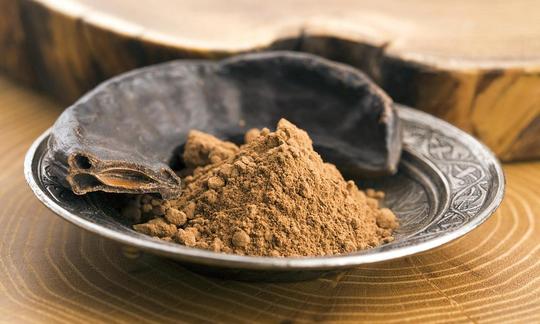

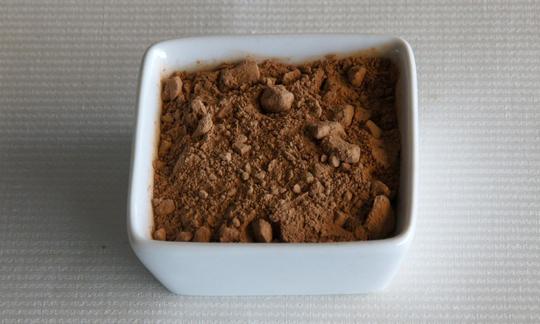

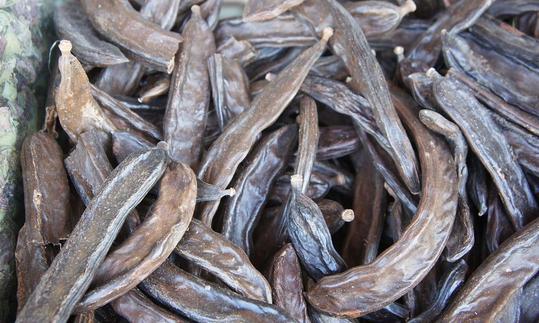

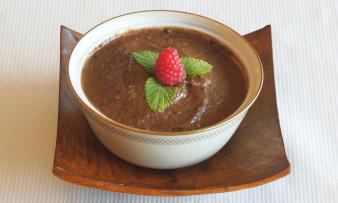
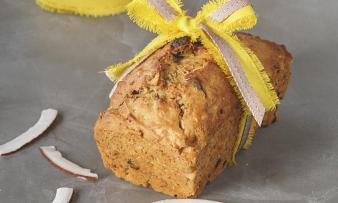
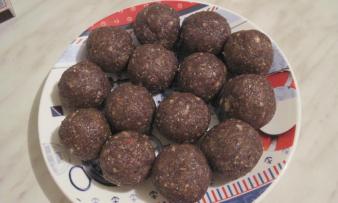





Comments